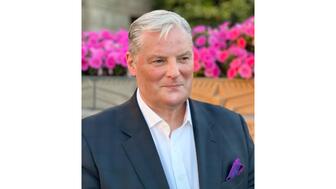Meet the Smithsonian’s New Curator of Gems and Minerals
Dr. Gabriela Farfan has big plans for the museum’s collection of 10,000 gemstones and 385,000 mineral specimens.

She brings a wealth of knowledge to the role, including a Ph.D. from MIT.
However, Farfan’s story starts long before she reached the Ivy League, as her fascination with gems and minerals started at a young age.
She took over as curator in May, when the former curator of the collection, Dr. Jeffrey Post, stepped down after nearly four decades with the institution.
This was my first time visiting the museum.
While at the north entrance waiting for Farfan to meet me, I found myself drawn to the Berns Quartz, which stands 7 feet tall and weighs more than 8,000 pounds. Because the mineral was discovered at the Coleman mine in the Ouachita Mountains of Arkansas, not far from where I grew up, I took it as a good omen.
Farfan insisted that because I’d never been to the museum, we should first do a walkthrough of the gems and minerals hall.
The entrance to the hall, the Harry Winston Gallery, is marked by a tall case holding, on a rotating lit pedestal, the historic Hope Diamond.
The Hope Diamond hasn’t always occupied this spot. Back in the day, Farfan explained, it was at the end of the hall, causing visitors to anxiously rush through the exhibits in anticipation of seeing the blue diamond.
It was moved to the front around the time of the hall’s 1997 renovation.
“Everyone gets to see [the diamond]. They get calm, they’re not stressed that they haven’t seen it yet, and then they’re ready to actually experience the rest of the exhibits,” said Farfan.
As we walked, Farfan shared other interesting facts like how Janet Annenberg, the philanthropist for whom the hall is named, and her sisters convinced each other to donate their jewels to the Smithsonian.
“Not a single taxpayer dollar goes into purchasing gems or minerals,” she told me. Everything is a gift, donation, or purchased with the endowment fund.
She gestured toward an emerald crystal, donated by Harry Winston, continuing, “and occasionally, we like to show people that gemstones do come from crystals, from minerals.
“We recognize the need to preserve some of these major crystals that would otherwise get converted into smaller gemstones [and] to show the public, you can get these large gems because you have large flawless crystals.”
Shortly after, we came to a case featuring a vibrant display of specimens, organized in the colors of the rainbow.
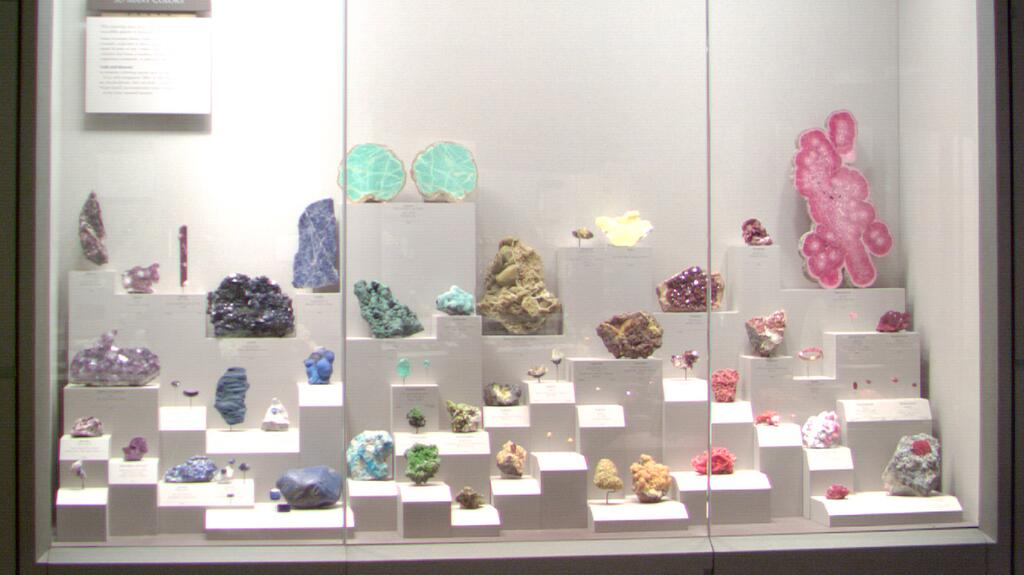
“We like to show the basic properties of minerals, starting with colors and shapes,” said Farfan. “We don’t try and overwhelm [visitors] with chemistry and everything quite yet. But we show the variety of minerals naturally occurring in the Earth. People love our color case, because it’s amazing. You can see the full rainbow.”
The details of how the public experiences the exhibits is a big consideration, she said.
“It’s a perfect marriage of science and art, putting them together in a really meaningful way that connects with people in a very unintimidating way that gets them excited about science, because when they see something that inspires awe, they want to learn more about it.”
She noted that the changes made in the renovation, though it’s now been over 25 years, have withstood the test the time. It was Post, not Farfan, who was running things back in 1997.
At that time, Farfan was a young girl, her passion for the sciences budding. Originally from Wisconsin, she would travel out West with her dad to go mining.
“Along the way, oftentimes artists [would] also visit these mines to get sunstones or other minerals to make their creations out of,” she said, adding that this is how she met some of the artists and gem cutters now in her professional network.
“I realized that I loved minerals and gemstones from the time I was about 6 years old, and I knew shortly afterward I wanted to become a minerologist. My goal was to do that in the best possible way.”
In high school, Farfan worked on a project on Oregon sunstones while doing research with mentors at the University of Wisconsin, and that’s when things really began to click.
“That [project] was my first introduction to mineralogical research and gemological research, and I realized this is what I wanted to do for the rest of my life,” she said.
Farfan visited the National Museum of Natural History for the first time at 16 years old, and before she arrived, she’d reached out to Post.
“I asked if I could meet him because I was so interested in gems and minerals that I thought it would be a treat to get to meet the curator of gems and minerals at the time,” she said.
After that meeting, they kept in touch about her education and her career. He even wrote her letters of recommendation.
Farfan went on to get her bachelor’s degree in geological and environmental sciences from Stanford University and her Ph.D. from the Massachusetts Institute of Technology–Woods Hole Oceanographic Institution Joint Program in Oceanography/Applied Ocean Science and Engineering.
While in graduate school, she volunteered at the Harvard Mineralogical Museum, and for the past few years, she’s been working at the Smithsonian in D.C.
Back in her office, she told me her focus today is mostly on biominerals, explaining that she pairs traditional mineralogical research with considerations of how biology plays a role in some mineral structures.
“I also do classical minerology, but the main focus of my research is to look at biominerals, like shells and skeleton and corals, and understand how changes in their local general environment can influence their crystal structures, on an atomic scale.”
Her future plans include bringing this meeting of the sciences to its own dedicated exhibit, which the museum currently does not have.
Her job as curator involves internal happenings at the museum such as active research, collecting data, and writing papers and proposals. But another part of her role is very much external—dedicating time to the displays.
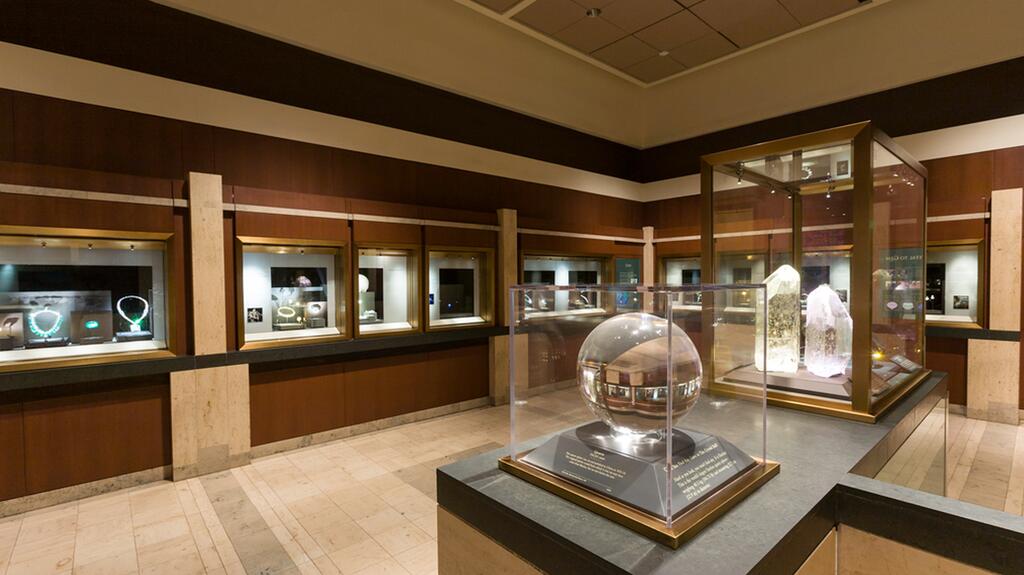
She and her team are continually searching for ways to expand and enhance the gem and mineral collection. They visit the Tucson gem and minerals show each year, hunting for worthwhile additions.
“We keep an open mind, because there are always new things that appear on the market, so we’re always trying to find what’s newly mined that year,” she said.
The two collection managers have been in their positions for 40 years each, she said, so when they go “shopping,” the managers know what they have and what they don’t have in the collection, which includes 10,000 gemstones and 385,000 minerals.
“We’re looking for holes in our collection, so if there’s something that’s been missing, we try and specifically search for that. Sometimes it might be an old discovery from someone whose had it tucked away for many, many years and now is willing to sell it.”
Farfan told me that just the day before our interview, a woman came into the museum with specimens she had dug up herself and wanted to donate some pieces.
“We talked to her about her experience for a while, and we ended up accepting a few specimens from her,” Farfan said.
However, with an institution as large as the Smithsonian, making changes isn’t easy, as they often involve consulting multiple departments. But when they do happen, it’s all for the visitor experience.
“Sometimes [we add] new discoveries. Oftentimes, it’s an upgrade,” Farfan said.
“If we get a larger, more beautiful spinel, we might decide we’re going to replace the [existing] stone with the bigger and better version. Our goal is always to show our best pieces on exhibit.
“What’s the point of having them behind the scenes if no one can appreciate them? We want the world and the American people to experience the best of the best. It’s my job to make sure that happens.”
There’s still much to learn as the exhibits evolve and as she grows in her position, Farfan said.
“It’s only been in recent years that I think our team has realized the power of gems in jewelry for engaging the public,” she told me on the behind-the-scenes part of the tour where I got to see the gems currently tucked away from public view.
(At this point, I was drooling over the “De Beers Cullinan Blue” diamond necklace.)
She said she’s been taking lessons from one of the museum’s consultants on jewelry history, so when new pieces come in, she’s prepared to speak on them.
“It’s not something I’m trained in as a scientist at all,” she said of jewelry history.
“If you show me your ring that has a cool gem in it, no matter how expensive or cheap it was, I will get excited about it. It’s still interesting. I don’t think I’ll ever be jaded.” — Dr. Gabriela Farfan
Despite all the challenges, when Farfan said being curator of the country’s official gem and mineral collection was her dream job, she meant it.
“I think the Smithsonian, especially our National Museum of Natural History, is a very special place to work. And I feel very privileged to be in this position and I foresee being in this career a long time,” she said. “Everything we see is special.”
At the end of our interview, I ask her if she thinks she’ll ever get used to being surrounded by such treasures each and every day, and she tells me she has two separate brains.
“I have my Smithsonian gem and mineral brain where I have to assess what is best for the collection, like if it’s ‘good enough,’ but I still have my personal side of the brain which is, if you show me your ring that has a cool gem in it, no matter how expensive or cheap it was, I will get excited about it,” she said.
“It’s still a mineral. It’s still a gemstone. It’s still interesting. I don’t think I’ll ever be jaded.”
No pun intended.
The Latest

In its annual report, Pinterest noted an increase in searches for brooches, heirloom jewelry, and ‘80s luxury.

Starting Jan. 1, customers can request the service for opal, peridot, and demantoid garnet.

The 111-year-old retailer celebrated the opening of its new location in Salem, New Hampshire, which is its third store in the state.

How Jewelers of America’s 20 Under 40 are leading to ensure a brighter future for the jewelry industry.

The new catalog features its most popular chains as well as new styles.


The filmmaker’s personal F.P. Journe “FFC” prototype was the star of Phillips’ recent record-setting watch auction in New York.

The new location in the Design District pays homage to Miami’s Art Deco heritage and its connection to the ocean.

Roseco’s 704-page catalog showcases new lab-grown diamonds, findings, tools & more—available in print or interactive digital editions.

Inflations, tariffs, and politics—including the government shutdown—were among consumers’ top concerns last month.

“Longtime favorite” presenters, as well as first-time speakers, will lead talks and workshops at the annual event in Tucson next year.

Silas Smith of Meridian Metalworks won the challenge with his pendant that blends Australian and American landscapes.

The sale of the 31.68-carat, sunset-hued stone was part of Sotheby’s first series of events and auctions in Abu Dhabi.

Most customers who walk into your store this month have made up their minds. Your job is to validate their choice, Emmanuel Raheb writes.

The collection features characters and motifs from Ukrainian folklore, including an enchanted mirror and a magic egg.

MatrixGold 3.11, the newest version of the jewelry design program, offers more flexibility, precision, and creative control.

The pavilion will be part of the 2026 JA New York Spring show, scheduled for March 15 to 17.

Kadet, a 1994 National Jeweler Retailer Hall of Fame inductee, helped grow the family-owned retailer in the Chicago area and beyond.

Billed as the world’s smallest wearable, Lumia Health’s new smart earrings have a health tracker subtly embedded in the back.

Don’t let those with December birthdays feel blue. Help them celebrate their month with blue zircon, turquoise, and tanzanite.

The new pink sapphire version of the piece dances with its wearer in the brand’s “Icons After Dark” holiday campaign.

A choice that’s generated a lot of commentary, Pantone says “Cloud Dancer” marks a fresh start and encourages relaxation and creativity.

The manufacturer’s holiday campaign features a gift guide filled with trending designs and jewelry that can be personalized.

The man was charged with theft, accused of ingesting the necklace while in a jewelry store in Auckland, New Zealand.

The Florida independent expanded its store from 8,000 to 14,000 square feet, fulfilling the vision of its late co-founder, Jim Dunn.

Sponsored by De Beers Group
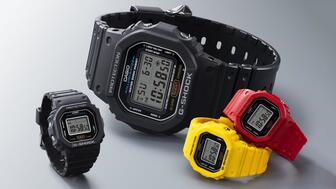
The classic 5600 series G-Shock has been scaled down to about a tenth of its size, becoming a fully functioning watch ring.
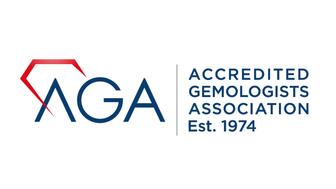
The association’s annual conference and gala will take place Feb. 4, 2026, during the Tucson gem shows.





